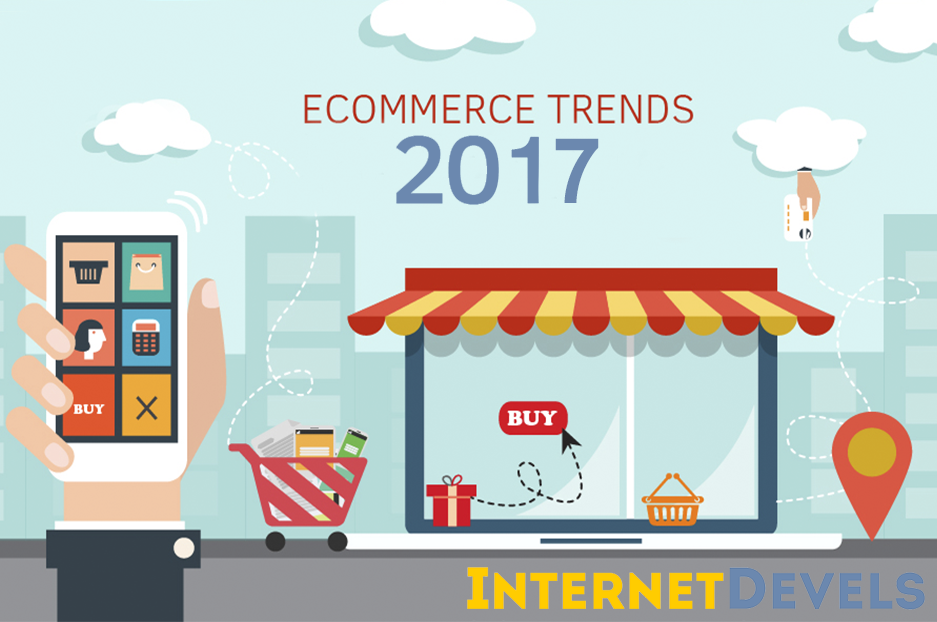A growing number of people all over the world prefer online shopping to going to physical stores; they prefer sitting in a comfortable chair at home to standing in a line. It’s convenient and time-saving. So, the popularity of e-commerce will continue to grow in 2017. If you want to start selling online, Drupal is the best solution for ecommerce websites. We have already reviewed the most common mistakes when building e-shops, and singled out 20 usability tips for e-commerce websites. Today we are going to predict some trends for this year for you to optimize your e-comm site in 2017.
Mobile first or not?
Almost half of all web traffic is from mobile devices now. Smartphone owners got used to the convenience of contactless payments. For example, the American coffee company Starbucks increased their revenue in 12%, thanks to the 22% of their customers who were using the app.
Page speed will remain a key factor, and looking for new ways to increase a website's load speed will be a major focus. Since 2010, this factor has been included in the Google’s search engine ranking algorithm. In order to create a better user experiences, Google announced in 2015 the Accelerated Mobile Pages (AMP) project. It aims to improve the mobile web performance by removing unnecessary code, plugins and adverts.
Sites using AMP are marked with ‘lightning’ symbol. They are ranked higher on the search engine results page on the displays of mobile devices. So, if you still haven’t implemented a responsive web design or AMP of your e-comm website, or still haven’t created an app, then hurry up.
Nevertheless, give up thinking of 'mobile users' and 'desktop users' as different people. An average household has up to seven internet connected devices. The digital marketing scientists from Wolfgang Digital got paradoxical research results. Mobile devices (phones and tablets) made up 59% of traffic and just 38% of revenue, while desktops dominated in revenue rates with 67% and had lower number of sessions, 41% of all. The reason for these surprising statistics is that customers search on their smartphones, make their purchase decisions, and then switch to desktops later for actually buying something.
Customizing and personalizing
It’s important to locate your advertisement in the right place on the web to make it noticeable for the right users at the right time. Web analytics help you identify and reach a target audience. There are a lot of programs connecting data about the same user from his or her accounts on different sites. The key component of the Starbucks app’ success lies in the customer behavior data it collects. This allows you to offer personalized deals on the products that customers already bought. So, ongoing customization will be an e-commerce trend in 2017, helping companies stay closer to their clients.
Social selling
Social networks will continue to impact the way we live, including the way we shop. Designed for communication between individuals, they are now widely used by companies for commercial goals. Pretty soon, we won’t need to leave our Facebook, Instagram, Pinterest, or other social media accounts to make a purchase. So, make sure you’ve added share buttons to your e-commerce site and shopping features to your social platforms.
Chatbots
A chatbot is an artificial intelligence program designed to simulate a conversation. It takes a written text input from a user, match it with a database, and provides an appropriate output. In 2016, this technology was widely applied in the marketing sphere. It’s cheaper to use a chatbot than to hire a human for the same kind of job. It may be, for example, asking users about their preferences and providing them with some personalized options. In September 2016, Facebook enriched its messenger platform with an in-application purchase functionality. This allows bots to complete entire purchases for customers. This will probably become the norm soon. Most chatbots can only perform a few rudimentary tasks now, but the range of their capabilities will grow quickly in the future to ease customer journeys.
More options for payment
E-wallets are slowly replacing credit cards, because many people don’t feel comfortable giving out their credit card numbers. Online stores will gain a broader audience when offering a choice of payment options, such as MasterPass by MasterCard, V.me by Visa, Google Wallet, BitCoin, Apple Pay, and of course PayPal.
Think about the coming new year. If you are an online store owner, contact InternetDevels team and order the ecommerce development service to make it feature-rich, smooth-working and user-friendly.

